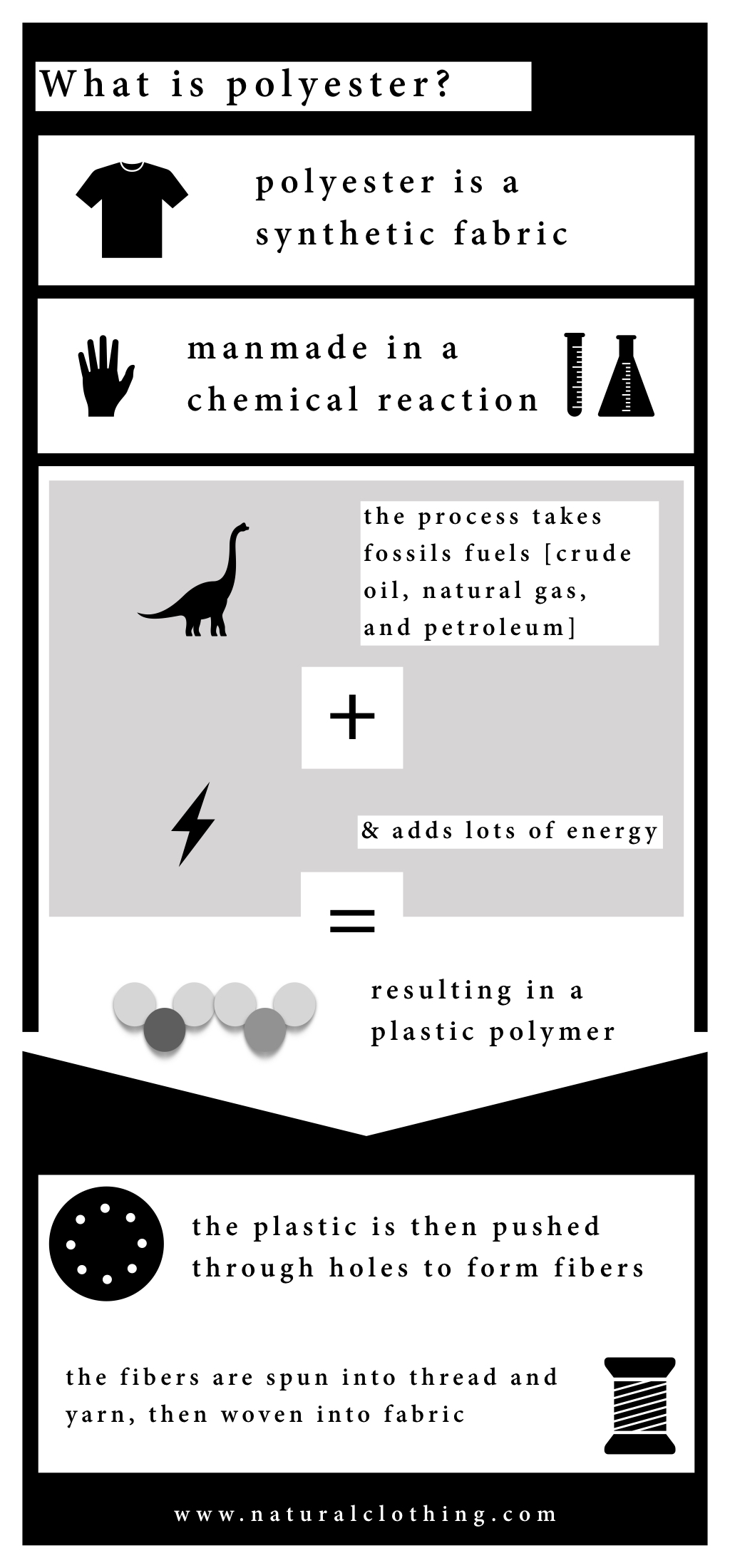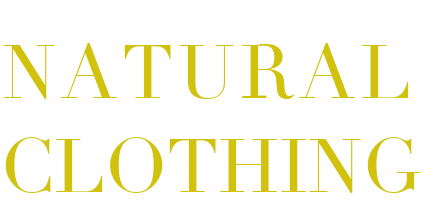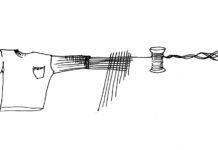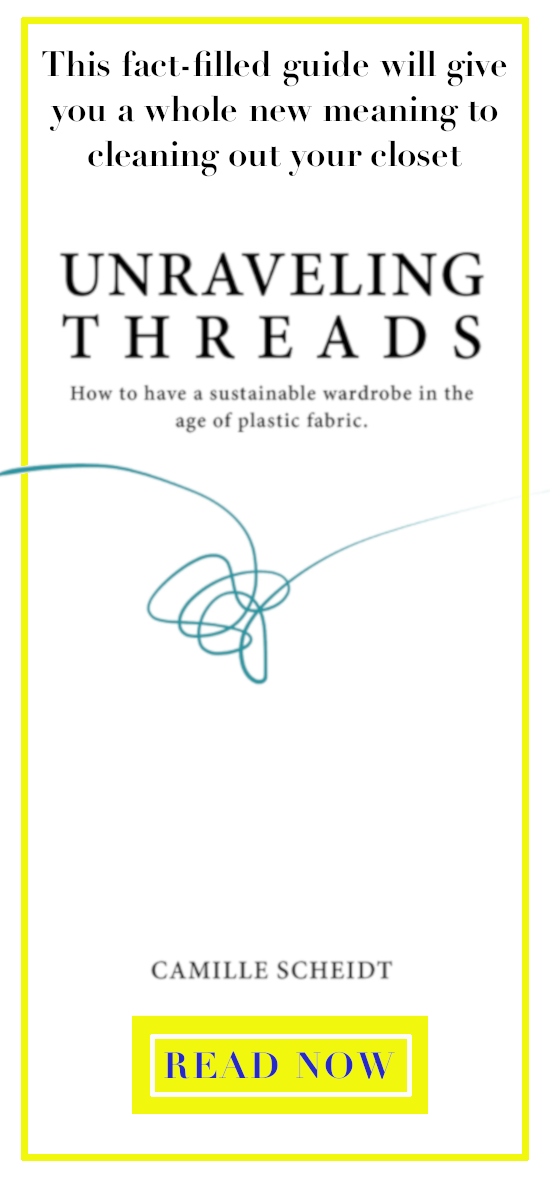In short, polyester is plastic. Polyester fabric is a synthetic fabric woven with threads made from polyester fibers. Polyester fibers are the product of a chemical reaction between coal, petroleum, air, and water. Not only is polyester derived from non-renewable resources, but the process of extraction from fossil fuels yields a high carbon footprint and significant byproducts. Once it has reached the end of its product life, polyester fabric takes decades to break down.
how is polyester made?
Polyester is a manmade polymer. A manmade polymer is the result of a chemical reaction in which two or more molecules create a larger molecule. This larger, resulting molecule retains the structures of the molecules that create it. A high volume of pressure and heat (energy) is required for the chemical reaction to occur.
Let’s use an example to look at how to make a polymer. Let’s polymerize a molecule we’ll call ‘1’ and a molecule we’ll call ‘2’. The chemical reaction looks something like this: 1 + 2 + 1 + 2 +1 +2 + lots of pressure + lots of heat = 1-2-1-2-1-2. So as you can see, the resulting molecule is not an entirely new substance. In this case, 1+2 does not equal 3, but a chain of 1’s and 2’s (1-2-1-2-1-2).

Most commonly, the polyester polymer is made of polyethylene terephthalate (PET or PETE) molecules. PET is a thermoplastic, which means the plastic can be heated and reshaped or remolded into a different form. Because PET is a plastic, it is not porous like natural fibers. Thus, it is an effective moisture barrier and commonly used for packaging such as water bottles. Packaging made from PET is labeled with the recycling number ‘1’.
The clear plastic water bottle you are drinking out of is the very same material as the clothing you might be wearing or ball of wool you’re knitting. The PET is just pulled, stretched, and melted in different ways.

is polyester recyclable? what’s the process to recycle water bottles into yoga pants or fleece?
Fortunately, PET is recyclable in a closed-loop recycling system. A closed-loop recycling system converts a product into another product without changing the inherent properties of the material. Many companies are now recycling the clear plastic bottles made of PET into polyester fabric. Though this does reclaim a synthetic fiber that may otherwise fill landfills, it still encourages polyester’s presence in the apparel industry. It is also an energy intensive process with many harmful toxic emissions released into the air including nickel, benzene, ethylene oxide, and ethylbenzene.
So PET (polyester) has the potential to be recycled in a closed-loop recycling system. However, the actualization of that potential lies in a three step process: collection, conversion, and selling.
Unfortunately, collection systems for clothing are few and far between. What’s more, currently, PET can only enter the closed-loop recycling system through the form of a plastic with the recyclable label ‘1’.
As far as conversion goes, the process of recycling can yield a significant carbon footprint. When PET is reclaimed and processed into polyester fibers for the use of polyester fabric, the material is sorted, shredded, melted, and dyed. The dyeing process is less consistent for reclaimed substances, so the process often uses more chemicals, energy, and water to achieve the desired effect than it would to dye a raw material.
Since polyester is stain resistant, the dyeing process for raw polyester fabric is already energy, heat, water, and chemical intensive. Further, polyester fabric must be colored with disperse dyes. Disperse dyes are insoluble in water. They must be applied in high acidic and extremely high temperature processes.

does polyester contain BPA?
No, polyester (PET or PETE) does not contain BPA (bisphenol A). BPA is an endocrine disruptor that is able to mimic the sex hormone estrogen. However, studies show that plastic products that do not contain BPA and are marketed as BPA-free, still release estrogenic chemicals. An endocrine disruptor is something that interferes with how your hormone system works. Endocrine disruptors can effect sexual development, cognitive and brain development, susceptibility to cancer, obesity, and learning disabilities. Basically, your hormones call the shots. You don’t want to mess with – er, disrupt – them.
In a study conducted on BPA-free plastic products that are designed to come in contact with food or drink, a wide variety of products were tested by exposure to just salt water or alcohol. Of the products tested, 70% released EA chemicals (chemicals that have estrogenic activity). After being exposed to conditions that the products would normally be subject to by consumer use (such as sunlight, washing and drying, or microwaving), more than 95% of the BPA-free products released chemicals that act like estrogen. Unfortunately, we’re still waiting for an assessment of the effects of these EA chemicals on our bodies.
For more about what we don’t know (but would like to) about plastics and hormones look here.
For the full study on endocrine disruptors in plastics look here.
what is a polyester blend? what is poly cotton?
A polyester blend is a fabric containing a certain percentage of polyester fibers mixed with another fiber to create desired characteristics in the final product. For example, cotton is blended with polyester fiber (known as a poly cotton blend) to add comfort in breathability and softness, or rayon is added to create a shiny finish to the textile. The care tag, which you can probably locate on the lower left seam of your garment, should tell you the exact percentage of the blend.
what are the properties of polyester fabric?
Polyester fabric is extremely durable. Since it is hydrophobic (water resistant), polyester fabric also dries quickly. It is also wrinkle resistant and does not stretch or shrink. Polyester fabric is a nearly ideal choice for outdoor and sporting clothing and gear. However, since polyester is water resistant, it grows bacteria much more readily than natural fiber fabrics. This can cause polyester clothing to smell pretty quickly after a wash. Further, it’s been found that washing cycles don’t always strip polyester of the odor causing bacteria.
This may cause us to wash our polyester clothes more. But here’s a pretty good excuse to skip laundry day: plastic microfibers. Plastic microfibers break free of our synthetic (polyester, nylon, acrylic) clothing in the wash. Then, these tiny bits of plastic flow through sewage water into the oceans. Or the sewage waste is spread on agricultural crops in what’s known as ‘sludge’ fertilizer. At a rate of 19,000 microfibers per article of clothing, per wash, these add up to half a million tons of plastic entering the ocean from laundry every year. In weight, that’s equal to over 50 billion plastic bottles. To learn more about microfibers and what we can do about them, check this out.
To learn more about some fantastic natural fiber fabric alternatives to polyester, check this out.














[…] a responsible adult living in 2018, you should take the time to gain a little insight into polyester and other materials. This should enable you to make far smarter choices going forward. On a […]
Such an informational and great article! thanks a lot. But unfortunately the part of recycled polyester fabric is a little too short. Would be great if you could its process.
Interesting results. Is there any way you’ll release a link to that study so I can check who conducted it, how it was conducted and what kind of level of chemical release was witnessed?
Hi Lily,
Are you looking for the study on endocrine disruptors? If so, the study is linked at the end of that section with the text ‘For the full study on endocrine disruptors…’.
Let me know if you’re looking for something else!
Great post! I had always thought polyester was just a basic fabric, but your explanation of how it’s made and its properties really opened my eyes. I didn’t know about its durability and versatility. Thanks for the detailed insights!